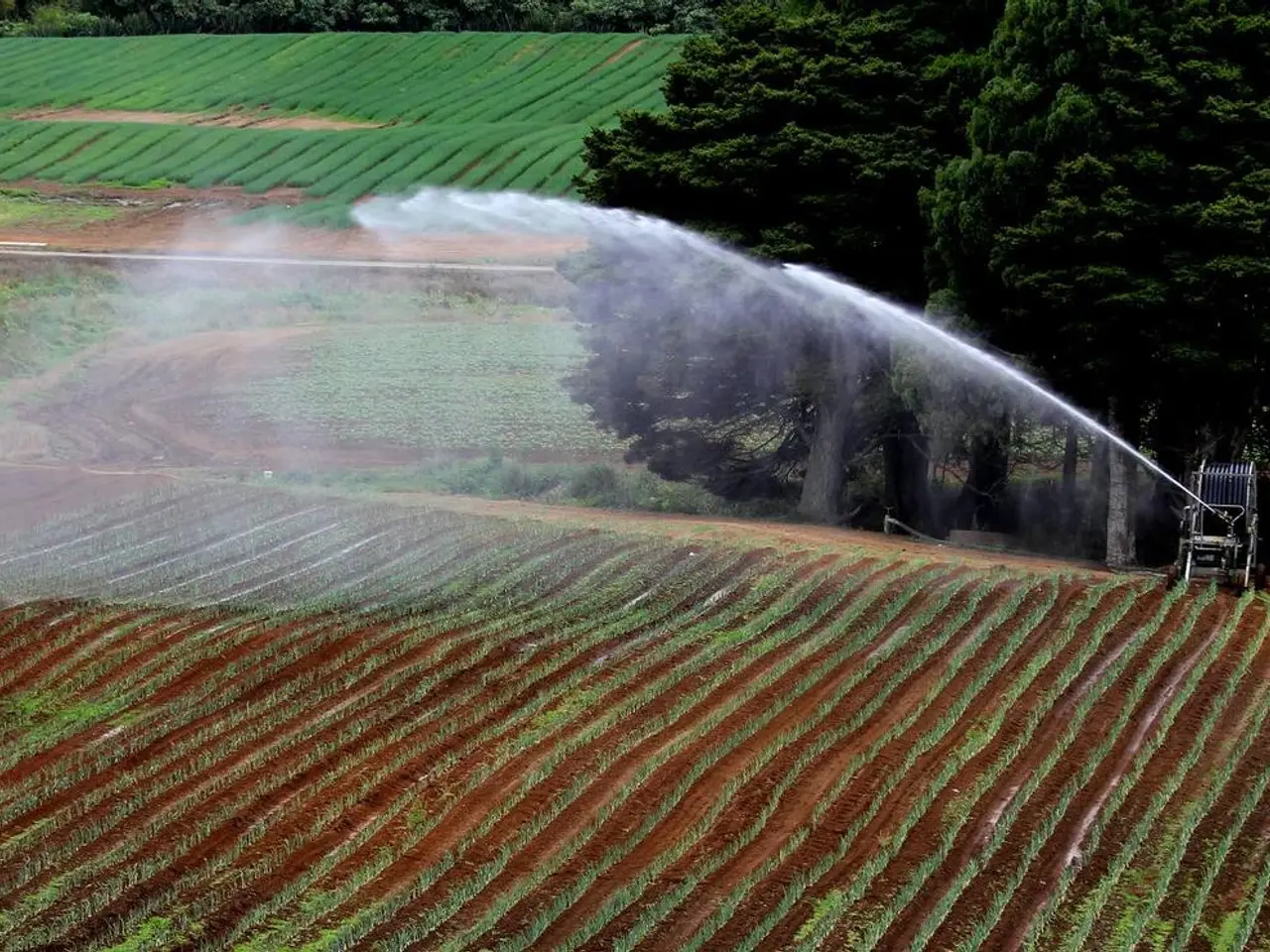Innovative Agriculture Techniques for Compact Areas: A Fresh Approach to Organic Farming
## A Guide to Vertical Farming in Small Spaces
Vertical farming is a revolutionary method for growing vegetables in limited areas, such as balconies, patios, or urban apartments, by maximising upward growth rather than relying on traditional ground-level beds. Here's how to successfully implement these techniques at home.
## Choosing the Right System
Vertical garden structures, such as trellises, cages, wall-mounted planters, hanging baskets, and modular vertical kits, are ideal for vining crops like tomatoes, cucumbers, beans, and zucchini. These structures can save up to 70% of space compared to traditional gardens while potentially tripling your yield.
Tiered shelving and stackable containers allow you to grow herbs or shallow-rooted vegetables (lettuce, spinach, radishes) on lower tiers and vining plants above, making the most of vertical space. Mobile planters and raised beds also offer advantages, as they allow you to move plants to optimise sunlight exposure throughout the day.
## Selecting Suitable Vegetables
Cherry tomatoes, lettuce, spinach, peppers, radishes, and herbs (mint, chives, basil) are ideal for small, vertical setups. Vining and climbing varieties, such as beans, cucumbers, and certain types of squash, excel when trained upward on supports. If sunlight is limited, choose varieties that thrive in partial shade.
## Building a Potato Tower Example
Potato towers are a specialized vertical solution for tubers. To build one, create a cylindrical cage (about 4–5 feet tall) from chicken wire or wire mesh. Layer straw, compost, and seed potatoes inside the tower. As the plants grow, add more layers, covering the stems to encourage more tuber formation. Place the tower in a burlap or plastic sack (with drainage holes) to contain soil and prevent pests. Potatoes are ready from early summer through fall, and the tower can be reused in subsequent years.
## Irrigation and Soil Management
Smart watering, using drip irrigation kits or self-watering planters, delivers water efficiently. Smart sensors can further optimize watering schedules based on soil moisture and weather. Use high-quality, well-draining potting mix. Avoid overwatering—especially in containers—to prevent root rot. Regularly supplement with organic fertilizers, as container-grown plants exhaust nutrients faster.
## Lighting Considerations
Position vertical gardens to face south (in the Northern Hemisphere) for maximum sun exposure. Rotate mobile planters as needed. LED grow lights can extend the growing season and compensate for low natural light indoors.
## Maintenance Tips
Regularly prune excess growth and train vining plants onto supports to maintain structure and airflow. Vertical setups can reduce ground pests, but monitor for aphids, whiteflies, and other common issues. Use organic controls as needed. Stagger planting and harvesting times to ensure a continuous supply of fresh vegetables.
## Example Vertical Farming Setup
Assess your space and sunlight availability, choose crops suited to your conditions (e.g., lettuce, tomatoes, herbs), install vertical structures (trellises, wall planters, potato towers), plant seeds or seedlings in appropriate containers or beds, set up irrigation—preferably automated or smart for efficiency, monitor growth, prune, and train plants as needed, and harvest regularly to encourage continued production.
## Benefits of Vertical Farming at Home
Vertical farming maximises yield, reduces pest problems, simplifies harvesting, and enhances aesthetics. By thoughtfully selecting crops, structures, and irrigation methods, you can transform even the smallest urban space into a productive vegetable garden using vertical farming techniques.
Vertical farming also allows for space-saving, as plants can be stacked vertically to grow more in less area. Companion planting pairs plants that benefit each other for enhanced growth and pest deterrence. Hydroponics is a method of growing plants without soil, delivering essential nutrients directly to plant roots. In a hydroponic system, plants are typically placed in containers filled with a growing medium like clay pellets or rock wool.
- Organic farming techniques can be employed in vertical gardens, promoting quality vegetables and maintaining a healthy lifestyle by using high-quality, well-draining organic potting mix and avoiding chemical fertilizers.
- The small-space vertical garden, comprising home-and-garden structures like trellises and wall-mounted planters, can be planted with a variety of vegetables such as cherry tomatoes, lettuce, and herbs, fostering a vibrant home-gardening experience.
- One could also venture into growing organic vegetables vertically by constructing a potato tower made from chicken wire, layering it with straw, compost, and seed potatoes, and employing hydroponic systems with organic nutrient solutions to further enhance the organic nature of the garden.




